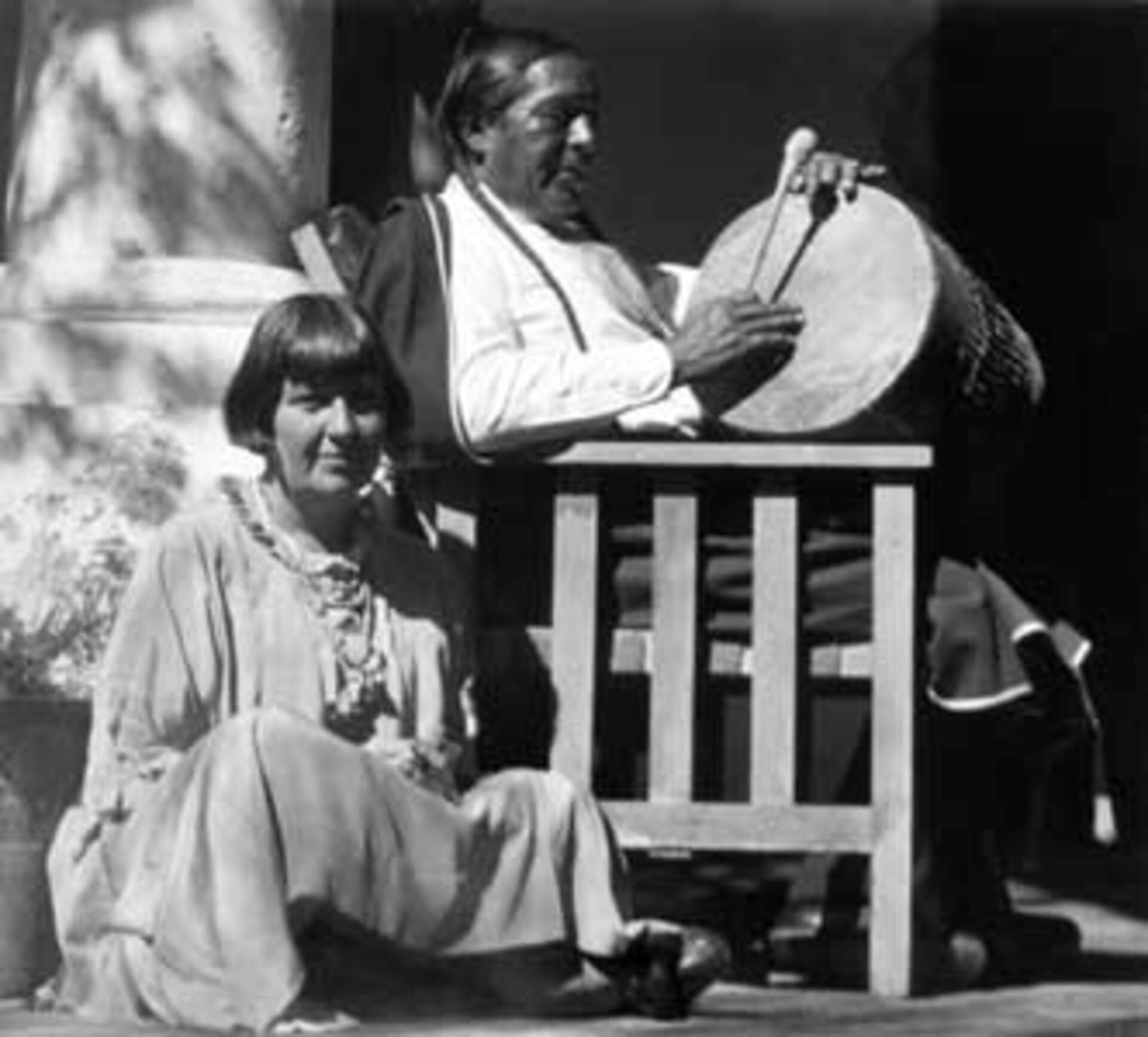
Portrait of Mabel Dodge Luhan by Carl Van Vechten, 1934
The Suppressed Memoirs of Mabel Dodge Luhan Presented by Lois Palken Rudnick
Sex, Syphilis, and Psychoanalysis in the Making of Modern American Culture
Mar 14, 2013 7:00pm — 8:30pm
Lois Palken Rudnick will present on her new book The Suppressed Memoirs of Mabel Dodge Luhan: Sex, Syphilis, and Psychoanalysis in the Making of Modern American Culture .
Mabel Dodge Luhan, née Ganson (1879–1962) was a wealthy American patron of the arts particularly associated with the Taos art colony. Mabel Ganson was the heiress of a wealthy banker from Buffalo, New York. Her first marriage, at the age of 21, was to Karl Evans, the son of a steamship owner, in 1900. They had one son, and Karl died in a hunting accident two-and-half years later [1902] leaving her a widow at the age of 23. In the Spring of 1904, an oval portrait of her in mourning dress was painted by the Swiss-born American artist Adolfo Müller-Ury for her paternal grandmother Nancy Ganson of Delaware Avenue in Buffalo. Later that year she married Edwin Dodge, a wealthy architect.
In this illuminating volume, comprising previously unpublished portions of Mabel Dodge Luhan's memoirs, Rudnick analyzes the influential art patron's confessions and places them in an enlivening historical context. Writing in the early part of the 20th century, the openly bisexual Luhan describes a life of pleasure characterized by numerous sexual partners (married men among them), yet confounded by consequent venereal diseases and the feeling of being "the prisoner of circumstances over which [she] had no control." Rudnick explains how the rampant spread of syphilis through the population affected not only Luhan, but many of her contemporaries, who struggled to reconcile Victorian notions of VDs ("the sins of the fathers") with a modernist worldview less bound to religious dogma, but still subject to the actualities of disease that accompanied the nascent sexual liberation, courtesy in part of Freud, of the early 1900s. In an attempt to overcome the burden of syphilis and the mixed-blessing of sexual freedom, Luhan became heavily involved in psychoanalytic treatment with some of America's most renowned practitioners, which experience she dutifully recounts in detail. Populated by such artistic, cultural, and literary luminaries as Picasso, O'Keeffe, and Gertrude Stein, Luhan's diaries are thoroughly engaging in their own right. But combined with Rudnick's enlightening analysis, they become an indispensable looking glass into life during a tumultuous transitional period. (Publisher’s Weekly, July 27, 2012)
Lois Rudnick is professor emerita of American Studies at the University of Massachusetts Boston, where she chaired the American Studies Department for 26 years. During her time at UMB, she won three teaching awards, including a national award from the American Studies Association. She has published and lectured widely in the US and Europe on American modern culture, and most particularly, New Mexico writers and artists. Her books include "Mabel Dodge Luhan: New Woman, New Worlds" (1984, in its 6th printing) and "Utopian Vistas: The Mabel Dodge Luhan House and the American Counterculture" (1996, in its 3rd printing, and the winner of three book awards). Her most recent book, on which she will be lecturing at the Burchfield Penny is "The Suppressed Memoirs of Mabel Dodge Luhan: Sex, Syphilis, and Psychoanalysis in the Making of Modern American Culture." Rudnick now lives in Santa Fe, New Mexico.
Salon hostes, memoirist, social activist, cultural patron and much-married (four husbands), Mabel Ganson Evans Dodge Sterne Luhan spent her lives as a cultural catalyst and creator of utopian communities in Florence, Italy; Greenwich Village, New York; and Taos, New Mexico. To each of these venues, she brought many of the most creative and socially active men and women of her generation; among them, Artur Rubenstein and Eleanor Duse, in Florence; Emma Goldman and Margaret Sanger in Greenwich Village; and D. H. Lawrence, Georgia O'Keeffe, Ansel Adams, Leopold Stokowski, and Martha Graham, in Taos. More than any woman of her generation (1879-1962), she became a focal point, in painting, photography, poetry, drama, and fiction for writers and artists for whom she embodied the "New Woman" of the 20th century.